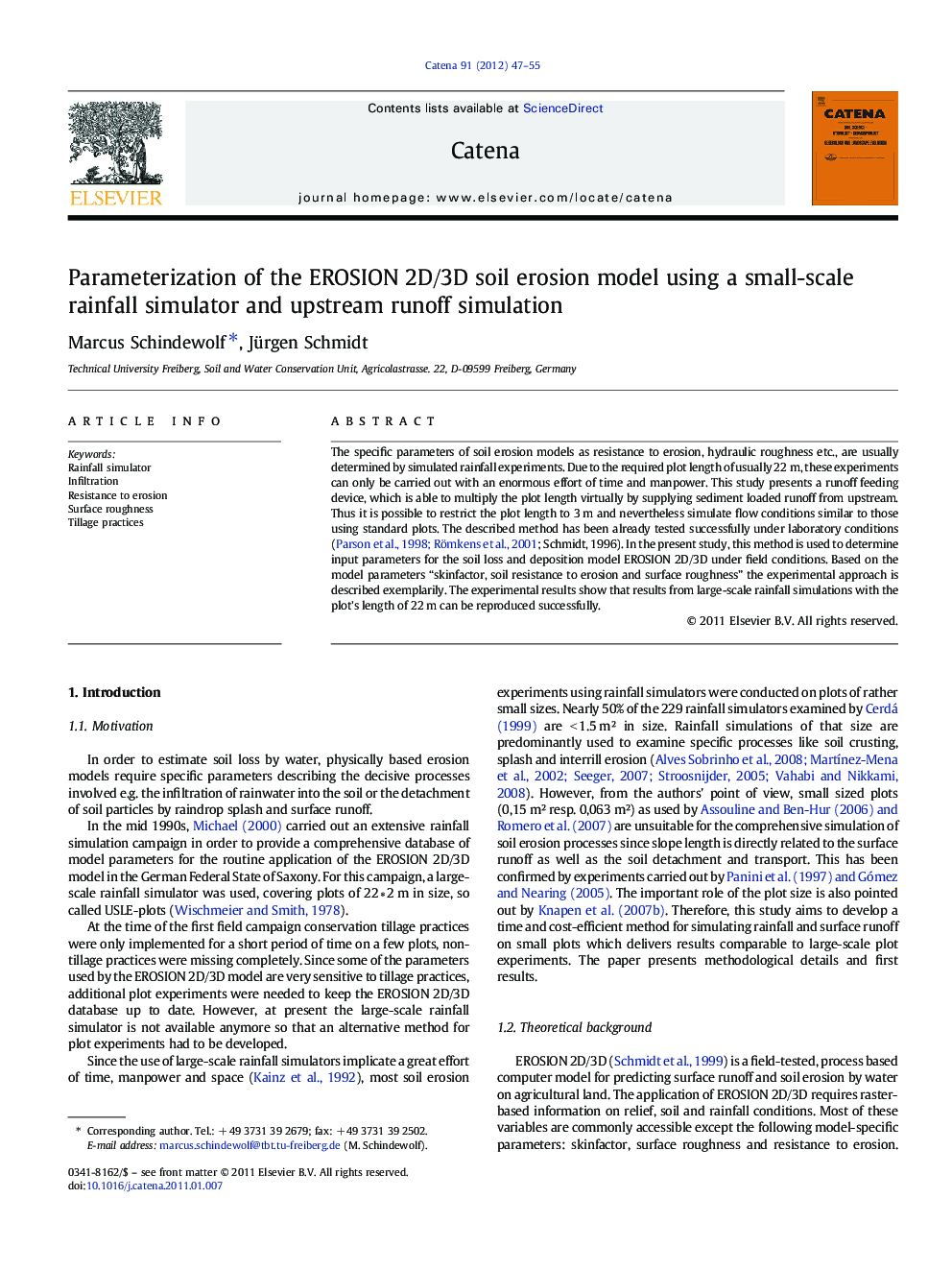| Article ID | Journal | Published Year | Pages | File Type |
|---|---|---|---|---|
| 4571859 | CATENA | 2012 | 9 Pages |
The specific parameters of soil erosion models as resistance to erosion, hydraulic roughness etc., are usually determined by simulated rainfall experiments. Due to the required plot length of usually 22 m, these experiments can only be carried out with an enormous effort of time and manpower. This study presents a runoff feeding device, which is able to multiply the plot length virtually by supplying sediment loaded runoff from upstream. Thus it is possible to restrict the plot length to 3 m and nevertheless simulate flow conditions similar to those using standard plots. The described method has been already tested successfully under laboratory conditions (Parson et al., 1998 and Römkens et al., 2001; Schmidt, 1996). In the present study, this method is used to determine input parameters for the soil loss and deposition model EROSION 2D/3D under field conditions. Based on the model parameters “skinfactor, soil resistance to erosion and surface roughness” the experimental approach is described exemplarily. The experimental results show that results from large-scale rainfall simulations with the plot's length of 22 m can be reproduced successfully.
Research Highlights► Small-scale rainfall simulator with an additional input of sediment loaded water. ► Simulated flow conditions are comparable to large-scale rainfall experiments. ► Tillage practice has changed over the last 13-15 years. ► Conservation tillage is less effective in limitting soil loss than in the past. ► Parameterization of the ERfaOSION 2/3 model becomes more detailed.
